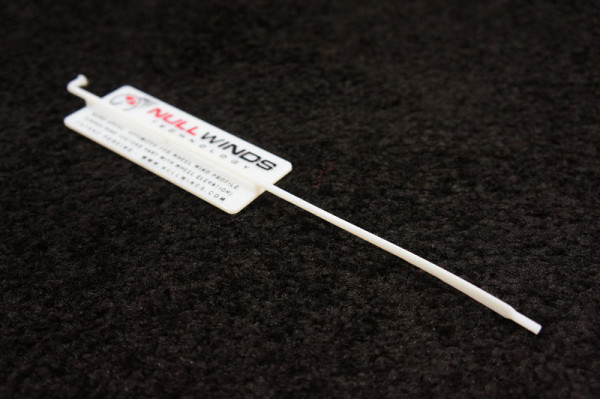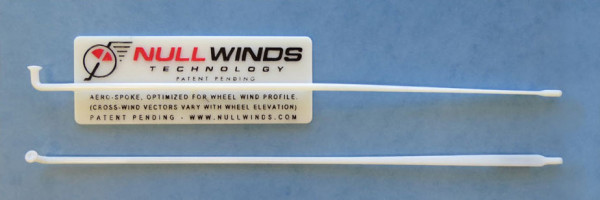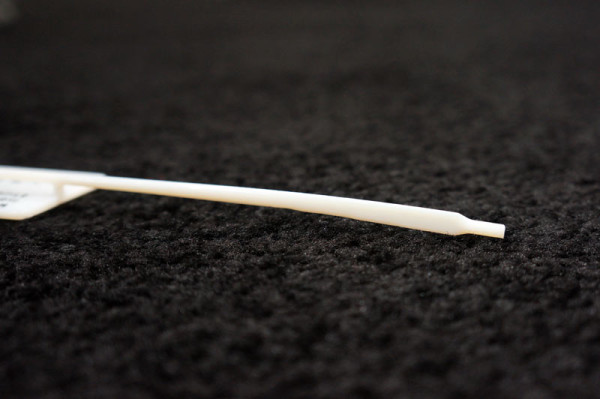Earlier this year, Null Winds introduced their upper wheel fairing concept to block wind from the top section of spokes that typically push into the wind, creating multiples of drag compared to other parts of the bike. Aesthetically that device left quite a bit to be desired, but it looks like their new AeroTaper spoke could be just the solution.
The design works like this: A round spoke profile is used closer to the hub where the spoke is moving slower in relation to the wind. Because they’re round, they don’t impose as much penalty in a cross wind and have minimal aerodynamic penalty for the headwind. Closer to the rim, where the spokes are moving relatively faster, it flattens out to create an aero shape where they need to slice through a head wind better. Thus, an optimized cross sectional profile.
It’s not dissimilar to the idea of deep section aero rims, and you’ve got plenty of choices in rim depths to suit conditions. Likewise, Null Winds founder Garth Magee says they’ll have different taper depths to suit varying degrees of cross winds. No, you won’t rebuild your wheel every time. Rather, you’ll have a rim that you really like and have several different wheels built with different AeroTaper spokes and choose according to the day’s conditions.
Some interesting snap-on spoke fairings at their booth caught our eye…
…but the real deal is far more practical. The underlying concept is simple, really. As speed increases, drag increases at a much higher rate. The faster you go, the higher percentage of your energy is spent overcoming drag. Since the top of your wheel is moving at least twice as fast as the rest of your bike, reducing drag there makes a more significant impact on overall speed per watt than other parts of the bike. But, there’s always a balance between straight line aerodynamics and drag (and stability) created by crosswinds. The AeroTaper spokes look like simple, cost effective solution. Check their technical breakdown of drag mechanics here.
These are plastic proofs of concept, actual spokes will be made of steel and likely be thinner in the round section. At the moment, there are no specific production plans, but he is looking for partners and/or licensees for the patent pending design.



